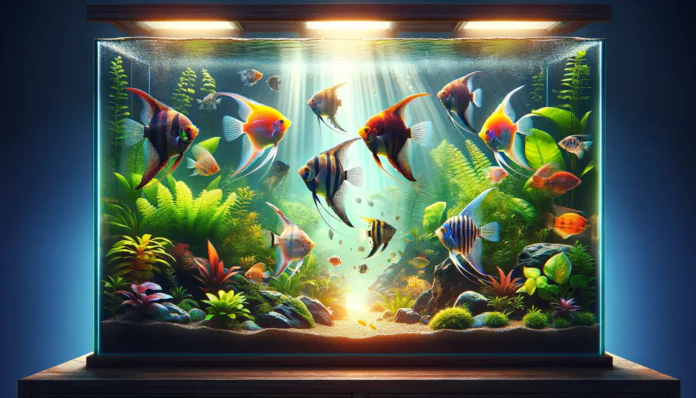Have you ever gazed into an aquarium and been captivated by the graceful movements of angelfish? These elegant creatures, with their flowing fins and striking patterns, are more than just a pretty face in the aquatic world. They’re a testament to the beauty and complexity of underwater life. In this guide, we’ll embark on a journey to understand how to care for these aquatic marvels, ensuring they thrive in your home aquarium.
Angelfish aren’t just another fish in the tank; they’re a popular choice for both novice and seasoned aquarium enthusiasts. Their serene beauty and fascinating behavior make them a captivating addition to any freshwater aquarium. But don’t let their delicate appearance fool you; these fish are hardy creatures, adaptable and capable of bringing life and color to your underwater habitat.
Whether you’re a first-time fish keeper or an experienced aquarist, this article is your go-to resource for all things angelfish. From setting up the perfect tank environment to ensuring their dietary needs are met, we’ve got you covered. We’ll dive into the nuances of angelfish care, including tips and tricks that even the most seasoned fishkeepers might not know.
So, grab a cup of coffee and settle in as we explore the enchanting world of angelfish care. Get ready to transform your aquarium into a thriving, aquatic paradise for your finned friends!
Understanding Angelfish: An Overview
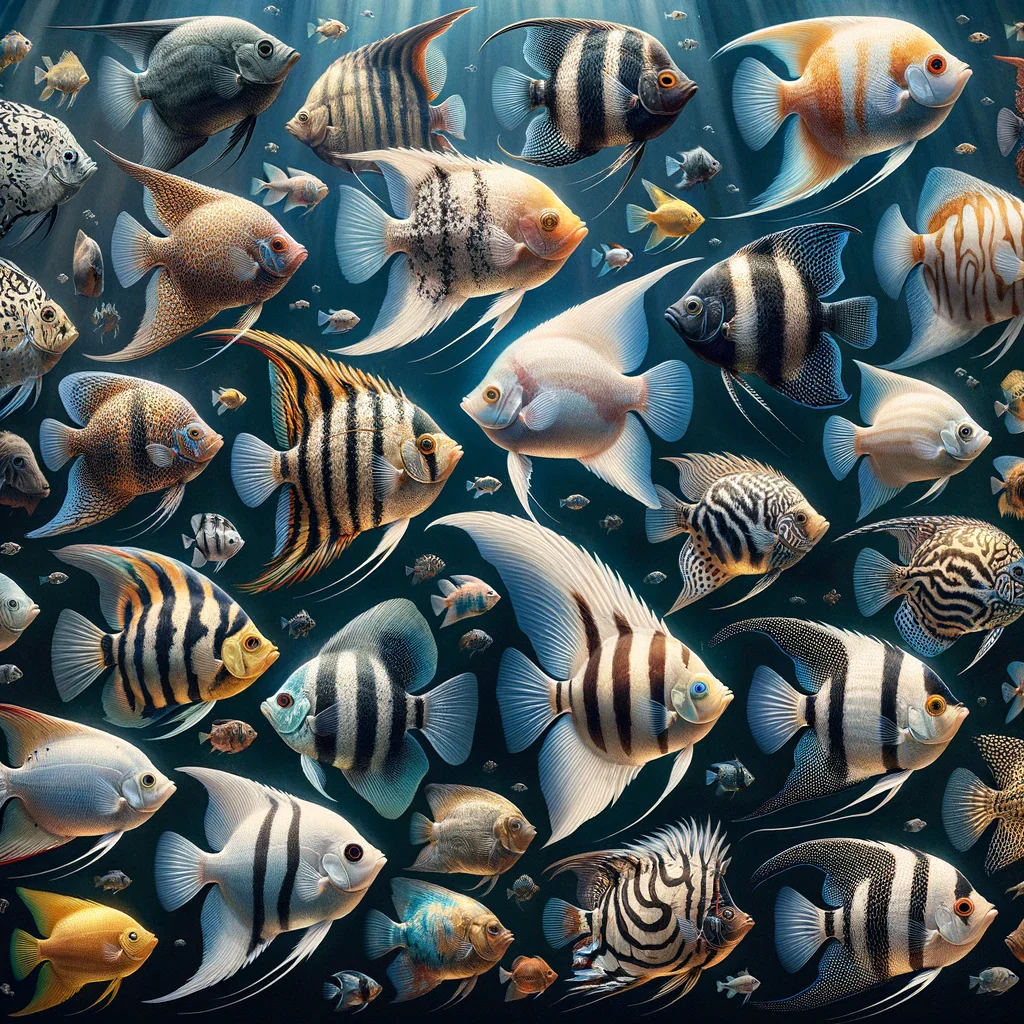
A Glimpse into the Origins of Angelfish
Angelfish, known scientifically as Pterophyllum, are not just any ordinary fish. Originating from the tranquil waters of the Amazon Basin, these tropical fish have adapted to a variety of environments, ranging from slow-moving streams to the flooded forests of South America. This diverse habitat has endowed angelfish with a remarkable ability to thrive in different aquatic conditions, making them a versatile choice for home aquariums.
The Many Faces of Angelfish
When it comes to types of angelfish, there’s a world of variety waiting to be discovered. From the classic Silver Angelfish, with its shimmering scales and bold stripes, to the striking Marble Angelfish, adorned with a kaleidoscope of patterns, each type brings its own unique flair to the tank. Other popular varieties include the Zebra Angelfish, the Gold Angelfish, and the Black Lace Angelfish, each with distinct features and personality traits.
Understanding Their Unique Characteristics
Angelfish are not just about looks; they have fascinating behaviors and needs. They are known for their semi-aggressive temperament, which can be a factor when choosing tank mates. Their tall, thin bodies are specially adapted for navigating the densely planted waters of their native habitat, which should be mimicked in the aquarium setting for their comfort.
The Right Environment for Thriving Angelfish
Creating the perfect environment for your angelfish is key to their wellbeing. This includes considering factors like tank size, water quality, and suitable companions. Understanding these aspects is crucial for anyone looking to create a harmonious and healthy habitat for their angelfish.
Setting Up the Perfect Tank for Angelfish
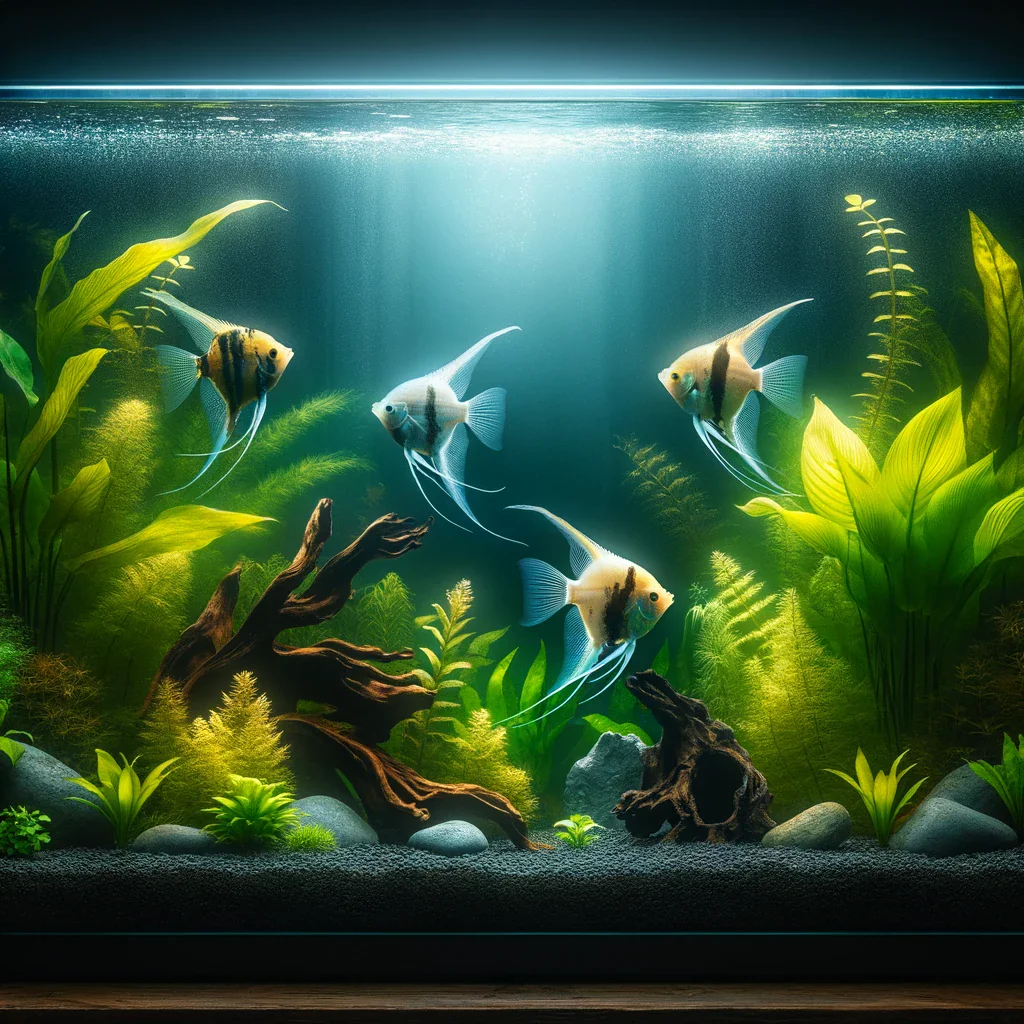
Choosing the Right Tank: Size Matters
When it comes to housing angelfish, size does matter. These majestic fish need ample space to swim and thrive. A minimum tank size of 20 gallons is recommended for a pair of angelfish, but if you’re planning on a community tank or a larger group of angelfish, you’ll need to go bigger. A larger tank not only provides more space for your fish but also helps in maintaining stable water conditions.
Crafting the Ideal Water Conditions
Angelfish thrive in water that mimics their natural habitat. The ideal temperature range for angelfish is between 76°F to 84°F (24°C to 29°C). Keeping the water’s pH level slightly acidic to neutral (around 6.5 to 7) and ensuring the water is soft to moderately hard will create an environment where your angelfish can flourish. Regular water tests and a reliable filtration system are key to maintaining these conditions.
Creating a Natural Aquatic Landscape
Angelfish originate from river regions with plenty of plants and hiding spots. To make them feel at home, incorporate live plants like Java Fern or Amazon Sword into your aquarium. These plants not only provide cover and reduce stress but also contribute to the tank’s ecosystem. Adding driftwood and rocks can create a more natural look and provide additional hiding spaces.
Lighting and Filtration: Setting the Stage
Proper lighting is crucial for both the health of your angelfish and live plants. A moderate level of lighting will support plant growth and showcase the natural beauty of your fish. As for filtration, choose a system that keeps the water clean without creating excessive current, as angelfish prefer calm waters.
Diet and Nutrition: Feeding Your Angelfish Right
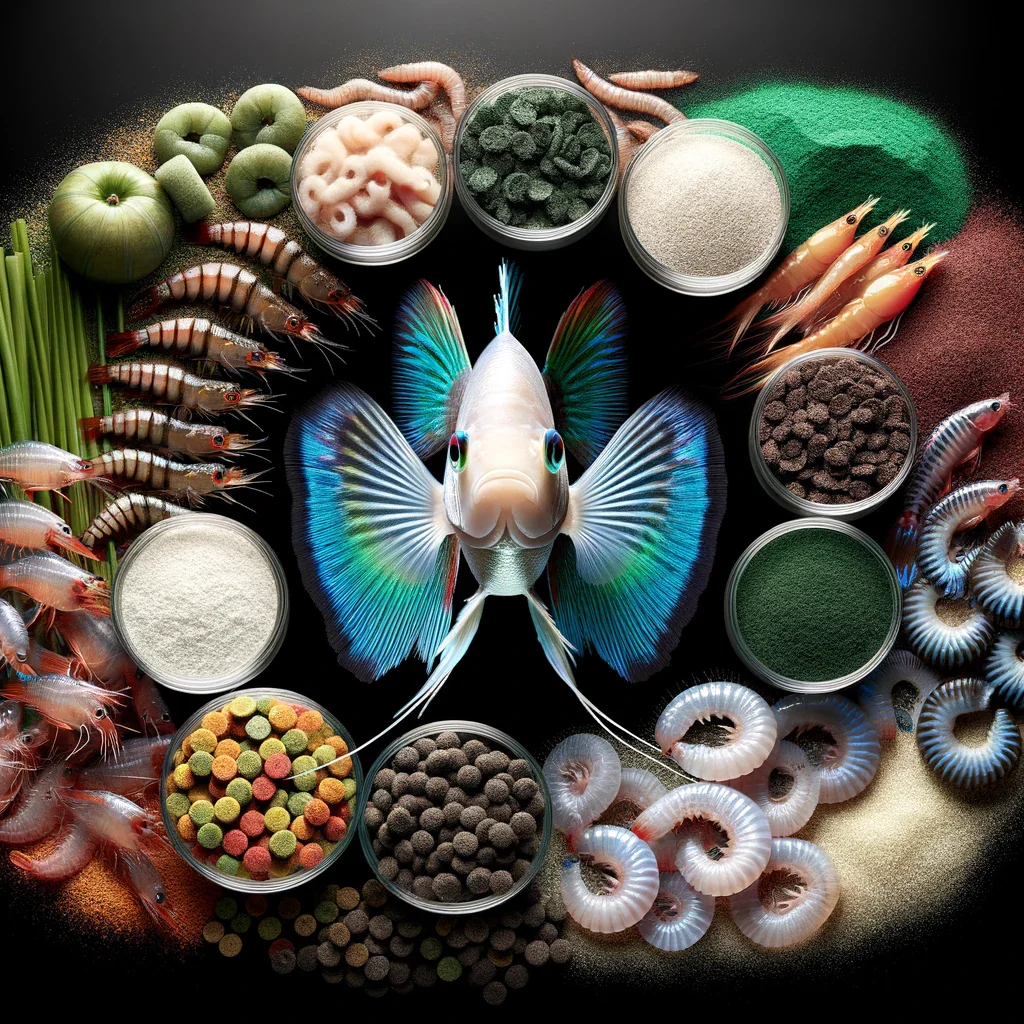
Understanding the Dietary Needs of Angelfish
Angelfish are omnivores, requiring a balanced diet of both plant and animal-based foods. In their natural habitat, they feed on a variety of items including small insects, larvae, and vegetation. In your aquarium, it’s essential to replicate this balanced diet to keep your angelfish healthy and vibrant.
The Right Food for Your Finned Friends
A good diet for angelfish includes high-quality flake food as the staple. But variety is the spice of life! Supplement this with frozen or live foods such as bloodworms, brine shrimp, or daphnia. These treats not only provide essential nutrients but also encourage natural foraging behavior. For the plant component, include spirulina or vegetable-based flakes.
Feeding Schedule and Quantity: Getting It Just Right
Overfeeding is a common mistake in fish care. For angelfish, feeding once or twice a day is sufficient. Provide an amount they can consume within a few minutes. Observing your fish during feeding times can help you adjust the quantity as needed. Remember, a little hunger is better than overfeeding, which can lead to health issues and tank pollution.
Special Considerations for Young and Breeding Angelfish
If you have juvenile angelfish or a breeding pair, their nutritional needs will be higher. Juveniles should be fed more frequently, with a focus on protein-rich foods to support their growth. Breeding angelfish also benefit from a high-protein diet to ensure they have the energy for reproduction and to aid in the development of eggs.
Health and Wellness: Keeping Your Angelfish in Top Shape
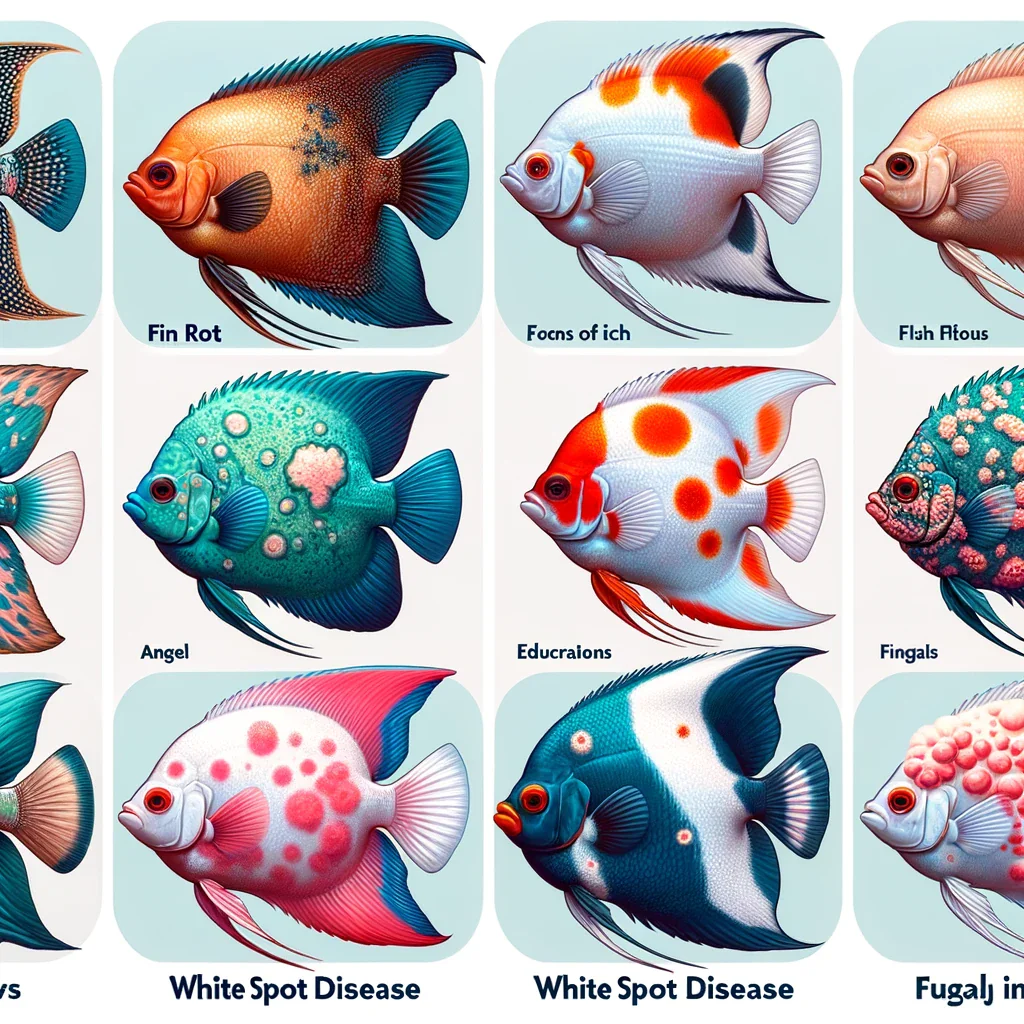
Spotting and Preventing Common Health Issues
Angelfish are generally hardy, but like all pets, they can encounter health issues. Common problems include fin rot, white spot disease (ich), and fungal infections. Keeping an eye out for signs like listlessness, loss of appetite, or unusual spots on their bodies can help you catch these issues early. Good tank maintenance, regular water changes, and proper nutrition are key in prevention.
The Importance of Water Quality in Fish Health
The quality of water in your aquarium plays a pivotal role in the health of your angelfish. Poor water conditions can lead to stress and illness. Regular testing of water parameters like ammonia, nitrite, nitrate, pH, and hardness is crucial. Equally important is ensuring your filtration system is functioning properly and that you’re performing consistent water changes.
Stress Reduction: Creating a Peaceful Environment
Stress can have a significant impact on the health of your angelfish. Factors like aggressive tank mates, poor water conditions, or inadequate hiding spaces can contribute to stress. To create a peaceful environment, choose compatible fish as tank mates, provide plenty of hiding spots with plants and decorations, and maintain a stable, clean aquarium.
When to Seek Help from a Professional
Sometimes, despite your best efforts, your angelfish may fall ill. If you notice persistent problems or severe symptoms, don’t hesitate to seek advice from a vet or an aquatic specialist. Early intervention can make a big difference in the health and recovery of your fish.
Social and Behavioral Aspects: Understanding Your Angelfish
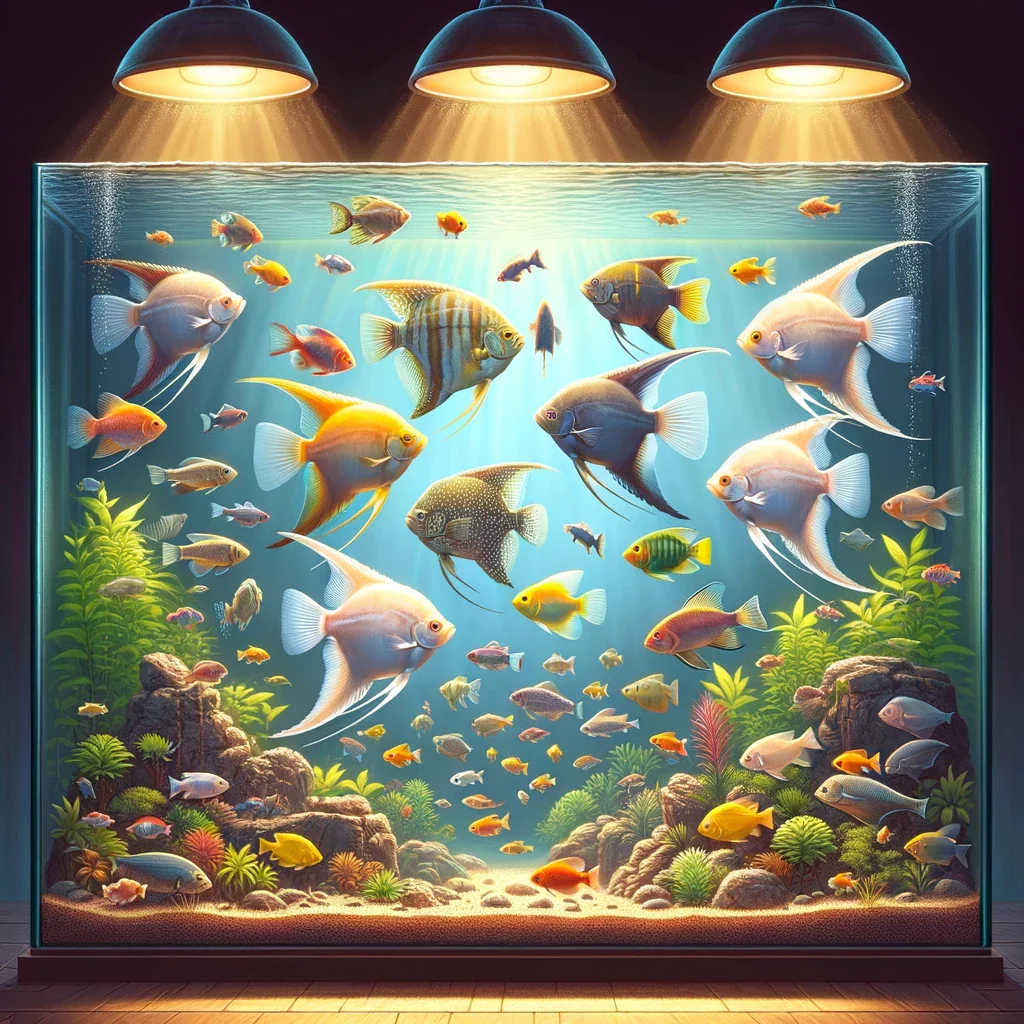
Decoding Angelfish Behavior
Angelfish are known for their unique personalities and behaviors. They can be territorial, especially during breeding season, and may show signs of aggression like fin nipping. Understanding these behaviors is crucial for maintaining harmony in your tank. Observing your angelfish’s interactions will give you insight into their social dynamics and help you address any issues that arise.
Creating a Harmonious Community Aquarium
When it comes to tank mates, not all fish are suitable companions for angelfish. They tend to do well with other peaceful, similarly sized fish. Good choices include larger tetras, dwarf cichlids, and certain types of catfish. Avoid very small fish that could be seen as prey, and overly aggressive fish that might bully your angelfish.
The Importance of Space and Territory
In the wild, angelfish have plenty of space and natural structures to establish territories. In an aquarium, providing enough space and hiding spots is essential to prevent stress and aggression. This can be achieved with plants, rocks, and decorations that offer refuge and boundaries for your angelfish.
Breeding Behavior: The Dance of Angelfish
Breeding angelfish can be a rewarding experience. These fish pair up and exhibit fascinating courtship behaviors. You’ll notice them cleaning a flat surface (like a leaf or the aquarium glass) where they plan to lay eggs. Understanding and supporting their breeding behavior requires specific conditions and care, which can be a captivating aspect of keeping angelfish.
Breeding Angelfish: A Guide to Successful Reproduction
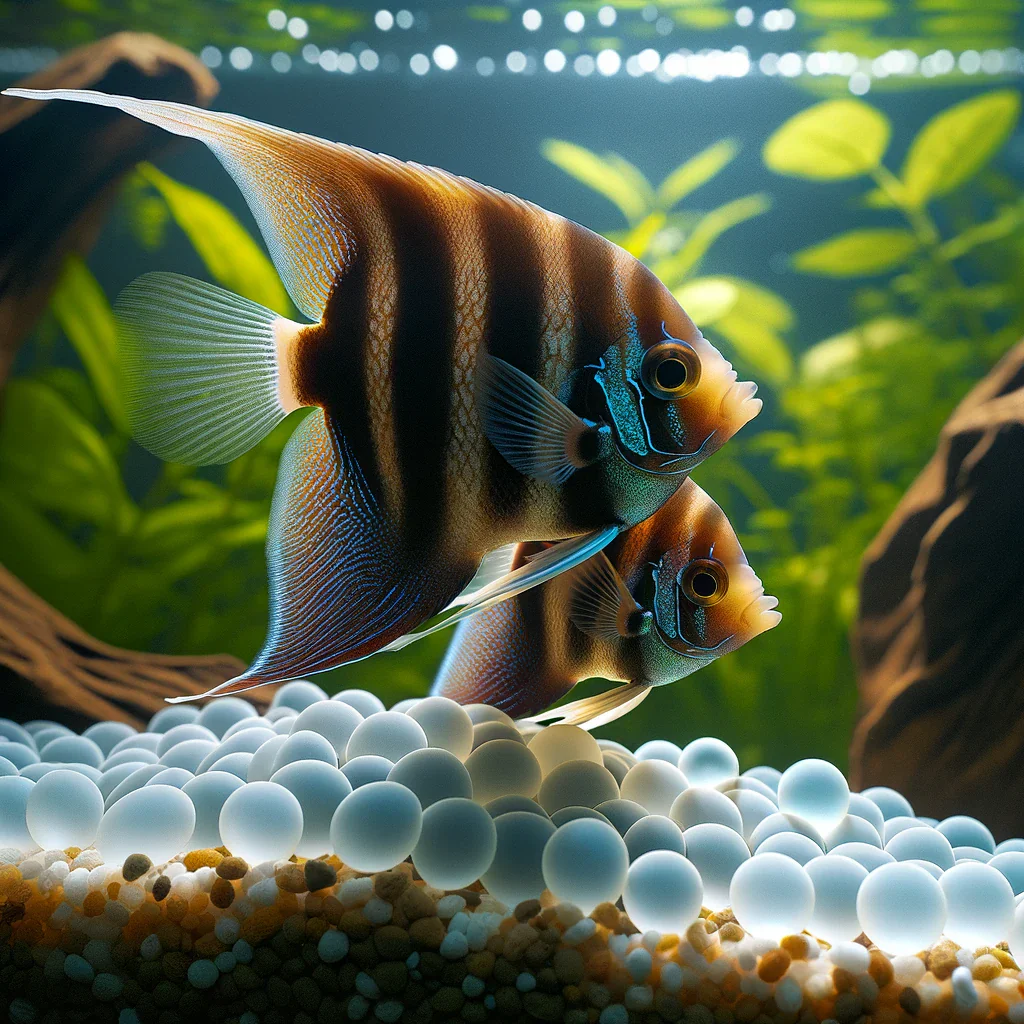
Preparing for Breeding: Setting the Stage
Breeding angelfish can be a fascinating and rewarding aspect of fishkeeping. To encourage breeding, it’s important to set up the right conditions. This includes maintaining optimal water quality — a slightly higher temperature around 80°F (27°C) and a pH near 6.5 can help. Providing a nutritious diet rich in protein will also prepare your angelfish for breeding.
Identifying and Encouraging a Breeding Pair
Angelfish typically choose their own partners. Once a pair is formed, they become quite inseparable. To encourage a strong bond, provide a peaceful environment free from stress and aggressive tank mates. Look for signs of pairing, such as two angelfish swimming closely together and defending a certain area of the tank.
The Breeding Process: From Eggs to Fry
Once a pair is established, they will clean a flat surface in the tank to lay their eggs. After laying, the female will guard the eggs while the male patrols the perimeter. It’s crucial to monitor the tank during this time to ensure the safety of the eggs from other tank inhabitants. In about two to three days, the eggs will hatch into fry.
Caring for Angelfish Fry
Newly hatched angelfish, or fry, require special care. Initially, they will feed on their yolk sacs, but after a few days, they’ll need to be fed with specially formulated fry food or newly hatched brine shrimp. Frequent water changes and a clean tank are crucial during this stage to ensure the health of the fry.
Ongoing Care and Maintenance: Ensuring Long-term Health

Regular Maintenance: The Key to a Healthy Aquarium
Consistent maintenance is vital for the health of your angelfish and the overall balance of your aquarium. This includes regular water changes (about 20-25% of the tank volume weekly), cleaning the substrate, and checking the filter system. These practices help in removing waste products, replenishing essential minerals, and keeping the water parameters stable.
Monitoring Water Quality: A Critical Routine
Regular testing of the aquarium’s water is crucial to prevent health issues. Monitor parameters like ammonia, nitrite, nitrate, pH, and water hardness. Any significant changes should be addressed promptly to avoid stressing your angelfish. Investing in a good quality water test kit is essential for any responsible fishkeeper.
The Role of Lighting and Temperature Control
Proper lighting is important not just for viewing your angelfish but also for maintaining the health of live plants in the tank. A consistent light schedule helps regulate the natural behavior and growth of both plants and fish. Similarly, a stable temperature is crucial for angelfish, as drastic changes can lead to stress and illness. Using a reliable heater and checking the temperature regularly is a must.
Long-term Health: Observing Your Fish Regularly
Observation is a key aspect of fish care. Regularly spending time watching your angelfish can help you notice any changes in behavior or appearance that might indicate health issues. This proactive approach allows for early intervention, ensuring your angelfish remain healthy and happy.
Troubleshooting Common Issues in Angelfish Care

Identifying and Addressing Common Angelfish Problems
Even with the best care, angelfish can encounter issues. Common problems include fin rot, ich (white spot disease), and fungal infections. Early detection is key, so watch for symptoms like ragged fins, white spots, or lethargy. Many of these issues can be addressed with over-the-counter treatments, but understanding the root cause, like poor water quality or stress, is crucial for prevention.
Algae Overgrowth: A Common Challenge
Algae growth is a common issue in many aquariums and can become a nuisance. While some algae are normal, excessive growth can be a sign of imbalances in lighting or nutrient levels in the water. Regular tank maintenance, controlling light exposure, and ensuring proper feeding can help manage algae growth.
Behavioral Issues: Aggression and Territorial Disputes
Angelfish can sometimes display aggressive behavior, especially if they feel crowded or are competing for territory. Providing ample space, proper hiding spots, and ensuring a well-balanced community in the tank can help minimize these issues. Observing your fish’s behavior and making adjustments to the tank setup can often resolve these conflicts.
Dealing with Unexpected Fish Deaths
Losing a fish can be distressing and puzzling. If this happens, it’s important to check water parameters and review your fish care practices. Sometimes, despite all efforts, fish succumb to age or underlying health issues. Understanding this can help in maintaining the health of the remaining fish and preventing future losses.
Conclusion: The Joy of Keeping Angelfish
Keeping angelfish can be an incredibly rewarding experience. These beautiful and graceful creatures add elegance and life to any aquarium. While they do require specific care and attention, understanding their needs can make angelfish keeping a fulfilling hobby. By providing the right environment, diet, and care, you can ensure your angelfish thrive, bringing beauty and serenity to your home.
Additional Resources for Angelfish Enthusiasts
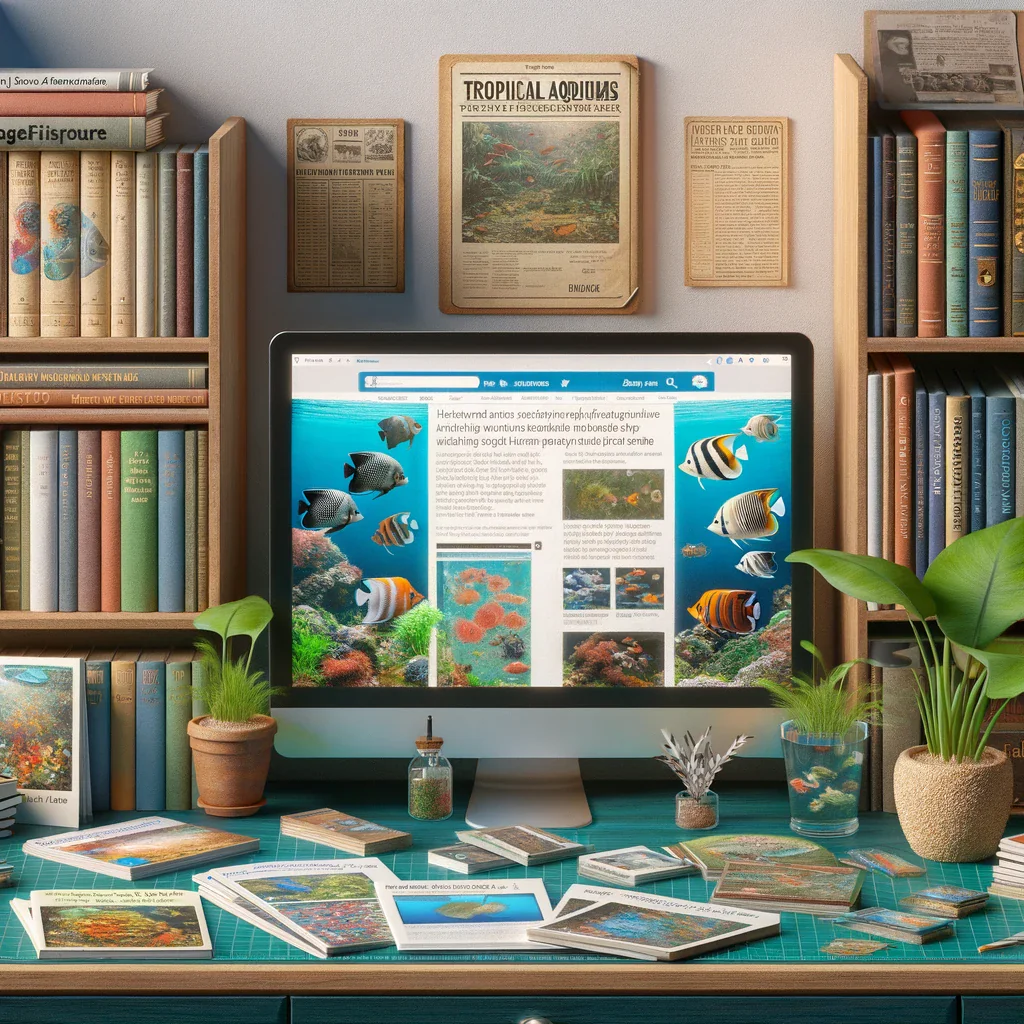
To further your knowledge and enjoyment of keeping angelfish, there are numerous resources available:
- Books: Look for books specifically about tropical aquariums and angelfish care.
- Online Forums and Communities: Join online fishkeeping forums where you can connect with other enthusiasts, share experiences, and seek advice.
- Local Fish Clubs: Participating in local aquarium societies or fish clubs can be a great way to learn and share knowledge about angelfish care.
Frequently Asked Questions (FAQs)
Q: How often should I feed my angelfish? A: Feed your angelfish once or twice a day, providing an amount they can consume in a few minutes.
Q: Can angelfish live with other fish? A: Yes, angelfish can coexist with other peaceful, similarly sized fish. Avoid very small or overly aggressive species.
Q: How do I know if my angelfish is healthy? A: Healthy angelfish are active, have a good appetite, and display bright, clear colors. Regularly check for any signs of stress or illness.
Q: How large should my angelfish tank be? A: A minimum of 20 gallons is recommended for a pair of angelfish, but larger is better, especially for community tanks.
